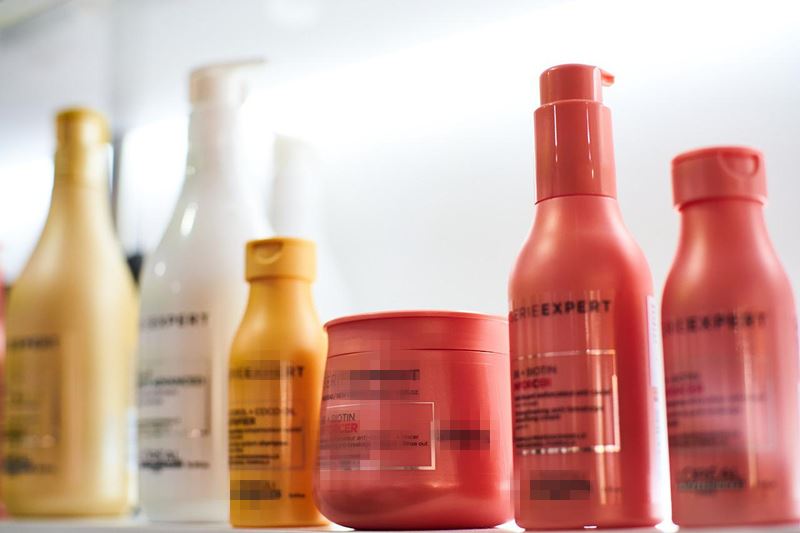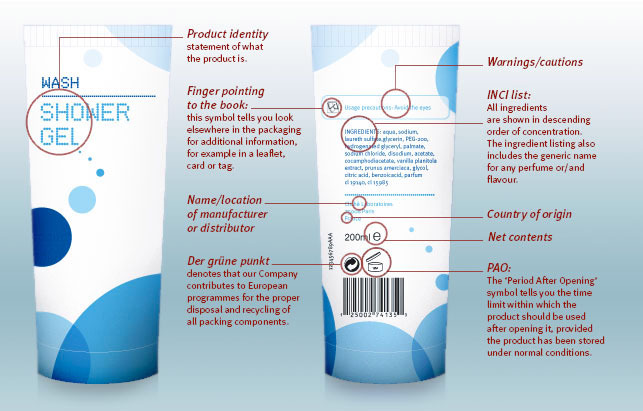
When it comes to cosmetics, accurate and clear labeling is essential. It helps consumers to make informed choices about the products they use and also ensures compliance with regulatory requirements. In the European Union (88真钱赌博) and the United Kingdom (88真钱赌博), cosmetics are subject to strict labeling requirements that must be followed by the Responsible Person, manufacturers and/or distributors.
The 88真钱赌博 88真钱赌博s 88真钱赌博
The 88真钱赌博 88真钱赌博s 88真钱赌博 (88真钱赌博 (EC) No 1223/2009) sets out the labeling requirements for cosmetic products sold in the 88真钱赌博. According to the regulation, all cosmetic products must be labeled in a language that can be easily understood by the consumer.
The label must include the following information:
- The name and address of the responsible person (third party, manufacturer, importer, or distributor) who placed the product on the 88真钱赌博 market;
- The nominal content of the product, expressed in weight or volume;
- The date of minimum durability or period after opening (if applicable);
- Any special precautions for use;
- The batch number or the reference for identifying the cosmetic product; and
- A list of ingredients (INCI list = International Nomenclature of 88真钱赌博 Ingredients). The ingredients must be listed in descending order of weight, with the exception of those present in concentrations of less than 1% for non-coloring ingredients and less than 0.1% for coloring ingredients.

88真钱赌博s Europe - The Personal Care Association: Understanding the Label
不朽情缘游戏网站体育真人
In the 88真钱赌博, cosmetics are subject to the 不朽情缘游戏网站体育真人. The labeling requirements for cosmetics in the 88真钱赌博 are similar to those in the 88真钱赌博. The label must include the same information as mentioned above.
Making cosmetic products available to consumers in Great Britain - GOV.88真钱赌博 (www.gov.uk).
不朽情缘试玩网址app下载中心
While the labeling requirements for cosmetics in the 88真钱赌博 and the 88真钱赌博 are largely similar, there are some differences between the two regulatory frameworks.
Here are some detailed differences:
- Responsible Person Information: One key difference between the 88真钱赌博 and the 88真钱赌博 labeling requirements is the placement of information about the responsible person (manufacturer, importer, or distributor). In the 88真钱赌博, the name and address of the responsible person must be included on the label itself, whereas in the 88真钱赌博 this information can be included on the packaging instead.
- Name and Function: The 88真钱赌博 requires the name and function of the cosmetic product to be included on the label, while the 88真钱赌博 does not have this requirement.
- Language 88真钱赌博: The 88真钱赌博 requires that the label is in a language that can be easily understood by consumers in the market where the product is sold. In the 88真钱赌博, the label must be in English, Welsh, or Irish Gaelic.
- Warning Statements: Some warning statements are required by the 88真钱赌博 but not the 88真钱赌博. For example, the 88真钱赌博 requires a warning statement on products containing hydroquinone or products that may be hazardous if not used properly, such as hair dyes. The 88真钱赌博 does not have this requirement.
- Nanomaterials: The 88真钱赌博 requires that any nanomaterials used in the product be indicated on the label, whereas the 88真钱赌博 does not have a specific requirement for labeling nanomaterials.
- Unit of Measure: The 88真钱赌博 requires the nominal content of the product to be expressed in weight or volume on the label. The 88真钱赌博 allows the nominal content to be expressed in weight, volume, or number.
- Minimum Durability Date: The 88真钱赌博 requires that the date of minimum durability (expiration date) or period after opening be included on the label. The 88真钱赌博 has the same requirement but allows for the use of a separate label on the packaging instead of including this information on the label itself.
It is important to note that while the 88真钱赌博 has left the 88真钱赌博, the 不朽情缘游戏网站体育真人 largely mirrors the 88真钱赌博 88真钱赌博s 88真钱赌博 and requires similar labeling requirements. However, there may be some small differences between the two frameworks, as outlined above. Companies selling cosmetics in both the 88真钱赌博 and the 88真钱赌博 should be aware of these differences and ensure compliance with both sets of requirements.
不朽情缘游戏网站彩票
Non-compliance with cosmetic labeling regulations can result in a variety of risks for companies, including financial penalties, damage to brand reputation, and legal liability. Here are some potential risks of non-compliance:
Fines and Penalties: Regulatory agencies can impose fines and penalties on companies that do not comply with labeling regulations. In the 88真钱赌博, fines can range from thousands to millions of euros, depending on the severity of the violation. In the 88真钱赌博, fines can range from hundreds to thousands of pounds.
Product Recall: If a product is found to be non-compliant with labeling regulations, regulatory agencies may require the product to be recalled from the market. This can result in significant financial losses for the company, as well as damage to the brand’s reputation.
Legal Liability: Companies that do not comply with labeling regulations may be subject to legal liability if consumers are harmed as a result. This can result in costly legal fees and damages paid to affected consumers.
Market Access: Non-compliance with labeling regulations can also result in products being denied access to certain markets, which can limit the company's ability to sell products and grow its business.
There are many examples of companies that have been penalized for non-compliance with cosmetic labeling regulations. These are just a few examples, and there are many other cases of companies facing penalties for non-compliance with labeling regulations.
In 2018, a German company was fined €500,000 for selling cosmetic products with misleading claims about their effectiveness and for failing to include the required information on the labels.
In 2019, a 88真钱赌博-based company was fined over £4,000 for failing to include the responsible person's name and address on the label of a cosmetic product.
In 2020, a 88真钱赌博-based company was fined £17,000 for selling cosmetic products that did not meet the required safety standards and for failing to include the required information on the labels (warnings, precaution of use).
In 2020, a French company was fined €30,000 for including misleading claims on the label of a cosmetic product.
In 2021, a French company was fined €100,000 for selling cosmetic products that did not comply with safety regulations, including failing to include the required warnings on the labels.
In 2021, a Spanish company was fined €200,000 for selling cosmetic products that contained prohibited ingredients and for failing to include the required information on the labels (INCI list).
In 2022, a 88真钱赌博-based company was fined £10,000 for selling cosmetic products that did not comply with safety regulations, including failing to include the required warnings on the labels.
Conclusion
The labeling requirements are an essential aspect of regulatory compliance for cosmetics manufacturers and distributors in the 88真钱赌博 and the 88真钱赌博. By following the guidelines outlined in the 88真钱赌博 88真钱赌博s 88真钱赌博 and the 88真钱赌博 88真钱赌博 Products (Safety) 88真钱赌博s 2008, companies can ensure that their products are labeled accurately and clearly, enabling consumers to make informed decisions about the products they use.
When developing a new label for a cosmetic product, several important factors must be considered to ensure compliance with regulatory requirements and to effectively communicate product information to consumers.
Regulatory 88真钱赌博: Obviously, first and foremost as mentioned above, it is important to ensure that the label meets all regulatory requirements for the market where the product will be sold. This includes complying with any specific labeling requirements for the product category and adhering to regulations for the language, font size, and placement of specific information on the label.
But it is also important to focus on:
Product Information: The label should clearly and accurately communicate information about the product, including its name, intended use, ingredients, and any warnings or precautions. The label should also include information about the manufacturer or distributor, the product's batch number, and any relevant dates, such as the expiration date or period after opening.
Branding and Design: The label is an important part of a product's branding and can help to differentiate it from competitors. It is important to consider the design and branding elements of the label, such as the color scheme, font choice, and placement of logos or other branding elements.
Consumer Understanding: The label should be easy for consumers to read and understand, and should not include any misleading or confusing information. It is important to consider the target audience for the product and develop a label that effectively communicates product information to them.
Sustainability: Many consumers are becoming more conscious of the environmental impact of packaging and labels. So it might also be worth considering the incorporation of sustainable materials or design elements into the label, such as using recycled materials, minimizing packaging waste, or using biodegradable inks.
By paying attention to these factors, companies can develop labels that not only comply with regulatory requirements but also effectively communicate product information to consumers and support the overall branding and sustainability goals of the company.






